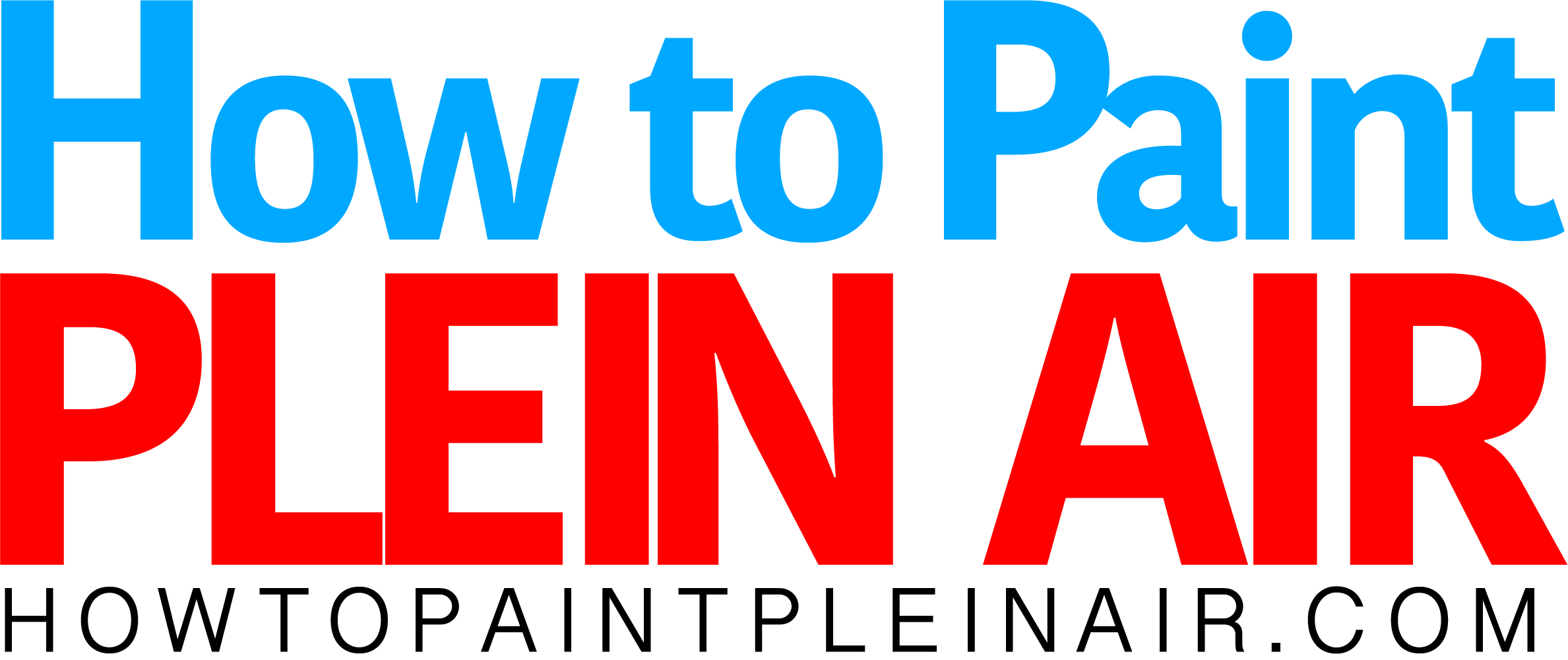Yum! Half the fun of looking at a plein air painting is enjoying it up close and personal. It is a worthy goal for the plein air painter to work a kind of magic with paint, making a realistic view when the viewer steps back and a scrumptious abstract when they step in closer to admire the details. The contrast is wonderful. And when the viewer steps up close, you want them to enjoy the feast.
An Up Close and Personal Feast for the Eyes
You want them to drool. Half the fun of looking at a painting is enjoying it up close and personal. It is a worthy goal for the plein air painter to work a kind of magic with paint, making a realistic view when the viewer steps back and a scrumptious abstract when they step in closer to admire the details. The contrast is wonderful. And when the viewer steps up close, you want them to enjoy the feast. Yum!
What to Expect from this post
- Why is brushwork important
- Methods for creating delicious brushwork
So many plein air artists leave this crucial piece out of their work: brushwork. Brushwork is an art in itself and is a big source of delight not only for the viewer of the painting but for the artist. That is because once the “lean” part of the painting is finished the artist can now start having the real fun. You’ll often hear the phrase “fat over lean”. That means remember to always add your thicker paint over the thinner paint. As a matter of fact,
you can’t do it any other way. You must either paint thickly, “fat”, or you must paint thin, “lean” and then you can add your fat over the thin. It’s impossible to add thin over fat unless you let the fat layer dry completely. But that wouldn’t be plein air, would it?
So, not remembering the “fat over lean” mantra, many plein air artists stop painting at the lean part, thinking their painting is finished. And, indeed, it may look finished from a distance, but up close it is flat and uninteresting, leaving the viewer wanting more, cheating the viewer of that up close and personal feast. The reason the artist stops at the lean stage is pretty obvious; they are tired. Hours of standing in the sun painting have taken their toll. The painting looks finished. Time to go home. Big mistake.
The lean stage of painting, what might be called “nailing down” the look, is the all important stage in which the artist gets the values and the colors right. But once that is done and the painting looks finished in this regard, that is, when you step back from the painting and it looks finished in terms of color, value, and focus, it is time for the joy to begin.
Here Comes the Fun
This is your reward as a painter for all the hard work you just put in. Lay in thicker colors, matching those in the lean layer. Put on some fat. This is impasto. Get up close and carefully put in some interesting brushwork. The brushwork variations can include:
- Pulling the paint in various directions
- Juxtaposing colors
- Adding warm and cool variation on the lean color
- Loading multiple colors on your brush
- Soft strokes here, bright strokes there
- Soft and sharp focus
- Palette knife touches here and there
A good way to think of the effect you want is if you were to isolate a small square of the painting and think of that isolated piece as a large abstract painting, would it be interesting and beautiful? Take a look at the very close up sections of the paintings above. They look like abstract paintings. Those brushstrokes are not uncontrolled accidents. They are the result of working with the paint, controlling the paint, in a way that generates happy “accidents”.
All content on this site is © 2015 Robert Lewis. All Rights Reserved. This intellectual property is strictly protected. Do not use without written permission from the copyright owner.






















Brilliant post, Robert. Love the close-ups. Thanks for the reminder!
Thank you, Susan. I have to remind myself of these things all the time.
Inspiring. I plan to try this on my next plein air work!!
Excellent. Let us know how it works for you.